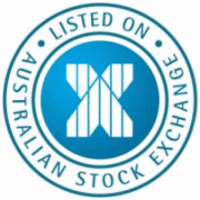
By Evan Lucas for Chris Weston, Chief Market Strategist at IG Markets
Eurasia, the winter and the Chinese dragon
Asia has seen clement trading as Japan celebrates Equinox Day; which saw Asian trading volumes evaporate.
The last trading day of the week has seen the Australian and Singaporean markets edge higher after kneejerk responses to news from the FOMC yesterday, but the low macro news environment is moderating any real prominent moves.
What is becoming clear as markets approach the end of Q1 is there have been three key themes that have impacted the full spectrum of instruments over this period: the US winter, Chinese growth and geo-political issues in Eurasia.
The biggest beneficiary of the macro news from the three regions has been gold; which had appreciated 16.7% since January 1 as risk aversion drove hot funds into the safe-haven asset which had lost 34% in 2013.
However, this trade has begun to break down as all three regional issues begin to dissipate.
While there is always a chance of further geo-political flare ups across the eastern boarder of Ukraine, the soft diplomacy from the EU overnight and the fact that Russia looks like it is stepping back from further escalations put the flight to safety trade on the outer and it looks unlikely any major economic sanctions will be inflicted on Russia.
That is risk positive for the DAX and CAC; particularly the DAX as German’s largest European trading partner is Russia. The bounce seen on the Frankfurt exchange is likely to continue on the parlay from political leaders.
Safety assets are also seeing downward pressure from US economic data. Comments from Janet Yellen’s testimony stated clearly that the Fed expects the US to break out of the winter downtrend. The news from the Philly Fed manufacturing data backed this call; snapping out of contraction in February coupled with the weekly jobless claims holding at near four months lows suggests Q2 and Q3 will see growth returning and will drive the USD as an investment currency after three months of drifting against major pairs.
What has also become apparent from the US is that bond markets are starting to move for the prospect of Fed fund rate hikes. The rejigging of the forward projections has seen the two and five-year treasury yields continuing to move higher and are now touching 2010 levels. The narrowing of the curve between the 10-year, to 30-year to 2011 level is also an interesting development from an equity and currency-market perspective, as it could see yield funds that are currently locked up in equities start to unwind.
When the Fed does move on rates, the attractiveness of the low risk-higher return US treasuries could pull funds out of the highly bid up trade. This is all the USD needs to see the carry trade being unwound as differentials dent the investment case further; leading to USD strength.
On the other side of the coin the China credit crunch concerns continue to develop. Having seen the first major corporate bonds default last week, coupled with further signs of hot money outflows. It has been interesting to see the PBoC continue to weaken the CNY, with the fixing rate coming in at 6.1475 from 6.1460 yesterday as the first week of the newly installed 2% band see the spot rate falling to 6.2272 which is near the lowest read in a year. With key industrial production and trade data disappointing in March seeing Q1 GDP growth prediction being forecasted at around 7% I would expect the PBoC to continue to lean on the current exchange rate in the interim.
While all three have been highly influential over markets in the first quarter of the year, the fact that the FOMC is still seeing growth in the US market is conducive for investment vehicles. The possible shift investment vehicles as traders look to shift out of crowded risk asset income equity trade and into the interest yielding US treasuries is a development likely to pan out over the coming months.
The closer we get to the end of QE the closer the equity market gets to seeing traders’ realise profits. With USDs spread across the eurozone as they take advantage of the recovery story across Australia’s banking plays of yield and China’s wealth management products, the threat of repatriation over the coming year is growing on the US recovery.